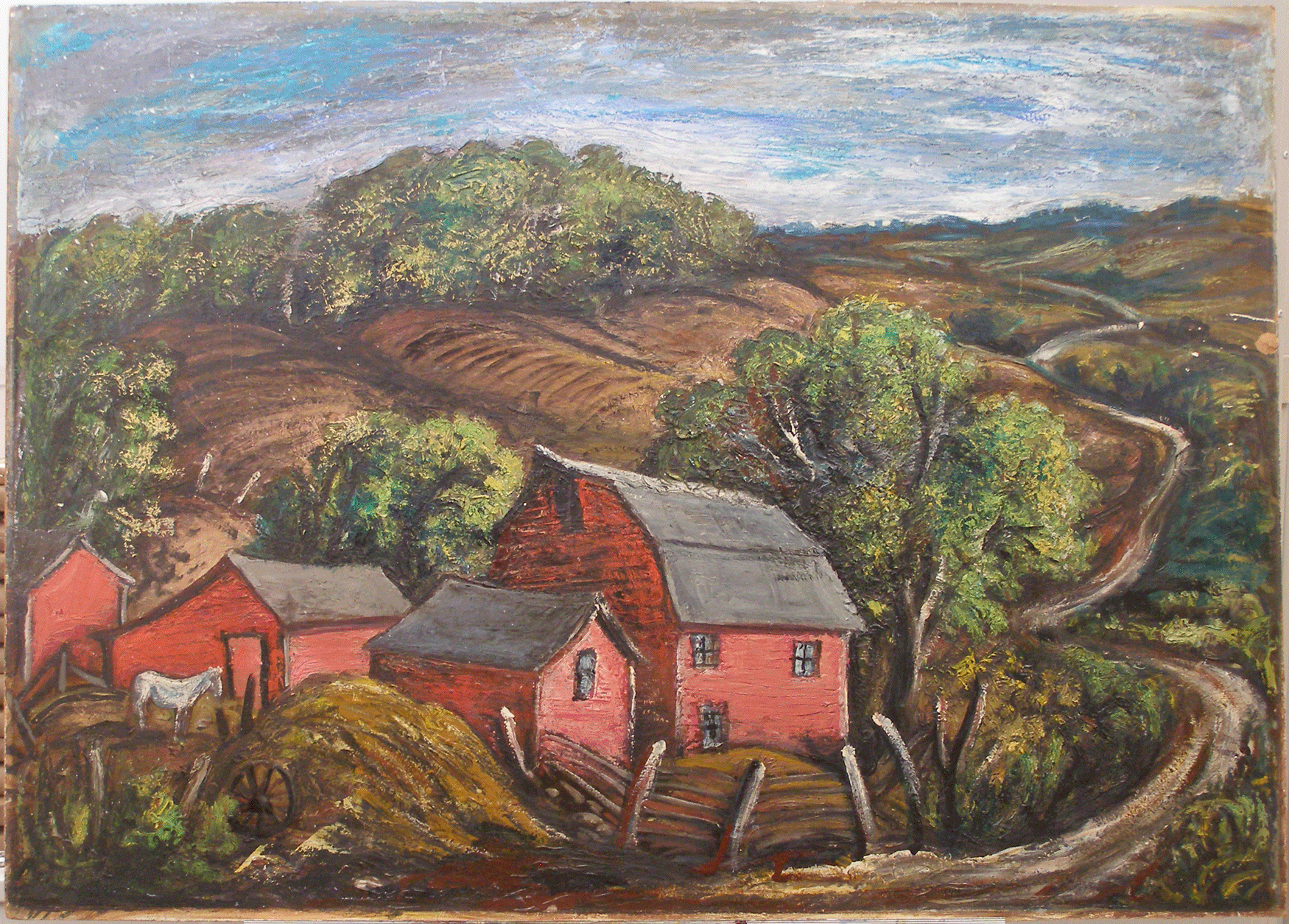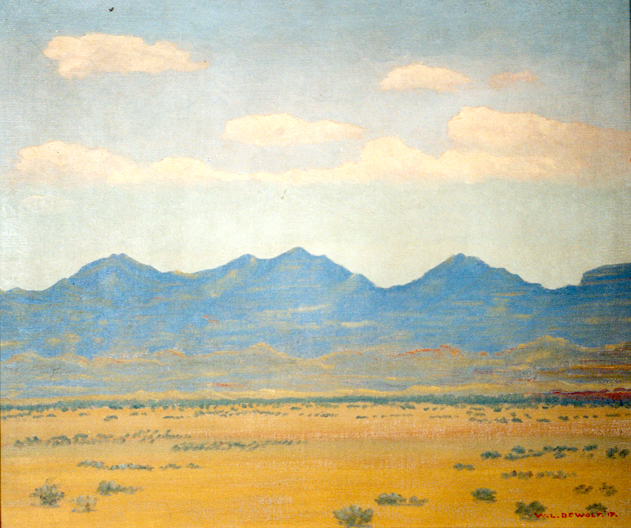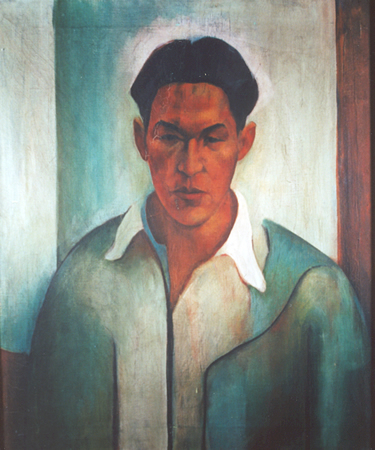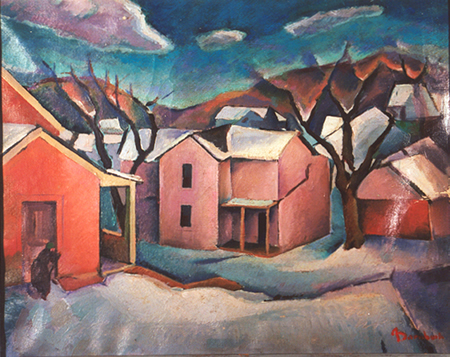CONSERVATION CORNER
Caring for and preserving the artwork in the collection is one of the Museum’s fundamental responsibilities. By “adopting” a work in the Conservation Corner, you ensure that these works receive the professional attention they need for their long-term care.
WAYS TO CONTRIBUTE
There are many ways to contribute, and each is greatly appreciated.
- “Adopt” the current featured work and your name will be associated with the work in our database and each time it is on view.
- Become a Friend of the Collection by making an annual donation of at least $100 toward collection care. In acknowledgement of your pledge, your name will be listed on the Friend’s donor board in the Conservation Corner.
- Contribute whatever amount you can for collection care. Donations can be made online, via mail, or dropped in the Conservation Corner donation box at the Museum. Every dollar helps fund continuing efforts to conserve the collection.

Criss Glasell (Austria, 1898 – United States, 1971)
Farm – Swiss Valley
Not dated
Oil on composition board, 26 x 36 inches
Gift of Barbara M. Peterson, in memory of her husband Walter F. Peterson, 2010.4
Criss Glasell was an important part of Dubuque’s thriving arts community in the 1920s-1940s. Born in Vienna, she immigrated to America with her family as a child and studied at the Art Institute of Chicago before moving to Dubuque in 1925. She and her husband, Don, ran a popular gallery and studio on Main Street and were active in the Dubuque Art Association (later renamed the Dubuque Museum of Art). Grant Wood was a friend and mentor to her and she attended his Stone City Art Colony in the summers of 1932 and 1933. She was influential in bringing Wood to Dubuque in 1934 for a special exhibit and lecture. Glasell exhibited her work widely during her lifetime and won many regional and national awards.
Condition Assessment
CONDITION ASSESSMENT and TREATMENT PROPOSAL
This painting is only in fair condition. There is a large paint chip on the right edge. There is extensive paint loss and scratches overall.
Treatment: The surface will be cleaned to remove grime. The conservator will retouch the scattered spots of loss and damage. The work will be reframed.
Treatment estimate: $2000
F. (Francis) Drexel Smith (America, 1874-1956)
Freight Cars
1930s
Oil on canvas
Dubuque Art Association purchase, 1987.02.11
Painted during the mid-1930s, this work is representative of the Precisionist style of that period with its bright blocks of color and sharp
lines. It is one of the few Precisionist works in the Museum’s collection.
F. Drexel Smith was born in Chicago and studied at the Art Institute of Chicago. He lived in Colorado and was known for his paintings of scenes from that area. His works are in significant collections throughout the United States.
Condition Assessment
TREATMENT COMPLETE: 2022
Charles Thwaits (or Thwaites) (America, 1904-2002)
Indian Head
ca. 1950
Oil on canvas
23 7/8 x 19 7/8 inches
Presented to the Dubuque Art Association by Charles W. Thwaits, 87.02.88
Charles Thwaites was a Wisconsin-born painter and printmaker. In 1928,
he was director of the Dubuque Little Institute and taught art at the Dubuque Art Association. He was a WPA artist in Wisconsin in the 1930s but in the 1950s, after visiting New Mexico, Thwaites joined the Taos Moderns and moved to Taos in 1962.
Over the course of his career he did many notable portraits, including a series of the Taos Pueblo Indians.
Condition Assessment
TREATMENT COMPLETE: 2017
Sheldon Parsons (America, 1866-1943)
Mountain Landscape in Autumn
Oil on board
15 1/2 x 18 1/2 inches
Gift of Mr. and Mrs. George L. and Dorothy McDonald, 87.02.02
Sheldon Parsons was born in Rochester, New York. He studied at the National Academy of Design with William Merritt Chase, Edgar Ward, and Will Low. From 1895 to 1912 he was a successful portrait artist in New York painting President McKinley and Susan B. Anthony among others. In 1912, Parsons moved to Santa Fe, New Mexico. His art was forever changed by the vivid colors and soft architecture of the Southwest. He was one of the earliest resident artists in the area and became the first director of the New Mexico Museum of Fine Art in 1918.
Condition Assessment
TREATMENT COMPLETE: 2016







